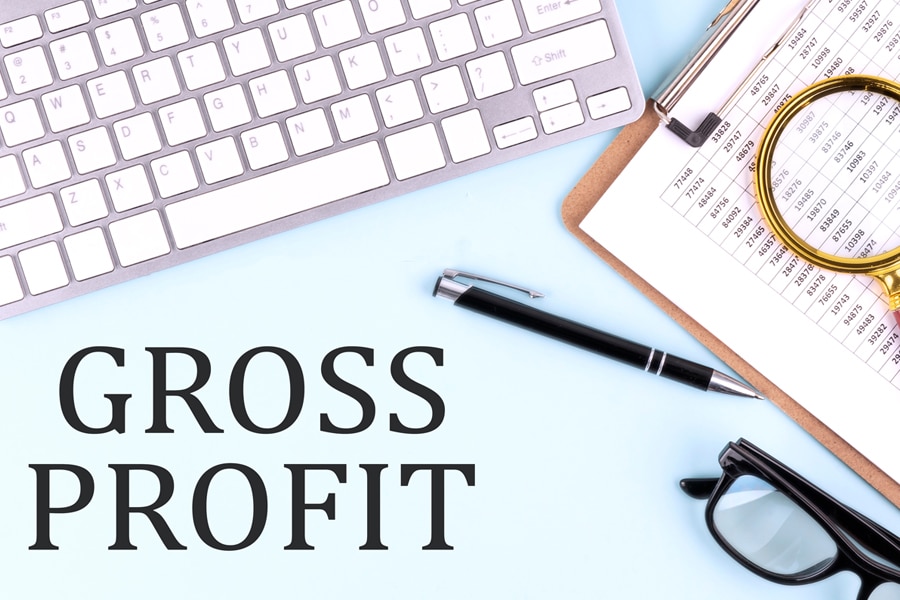First-in, first-out, also known as the FIFO inventory method, is one of four different ways to assign costs to ending inventory. FIFO assumes that the first items purchased are sold first. Companies must make an assumption about their flow of inventory goods to assign a cost to the inventory remaining at the end of the year.
In this article, we’ll discuss how to calculate the value of inventory and the cost of goods sold (COGS) using the FIFO method, as well as the advantages and disadvantages of using the FIFO inventory method.
How the FIFO Inventory Method Works
To better understand the FIFO inventory method, imagine a gumball machine. The gumballs at the bottom of the machine were likely the first ones added. When you insert a coin and turn the knob, those gumballs at the bottom, which went in first, will be the ones that come out first. The gumballs remaining in the machine at the end of the period—your inventory—are the gumballs that were added last. That’s the exact concept of the FIFO method. The goods that you first purchased will be the first ones to go to COGS upon sale.
What Type of Business FIFO Is Best For
- Businesses that prefer simple inventory cost flow tracking: Under FIFO, the concept is straightforward—goods purchased earlier and the ones recorded as COGS. This simple concept also makes it better than LIFO or last in, first out method because FIFO doesn’t result in “layers” that are present in LIFO, making record keeping difficult.
- Businesses that sell perishable items and sell the oldest items first: While the actual flow of goods isn’t required to match your FIFO assumption, FIFO will give you the most accurate calculation of your cost of inventory and sales profit if your goods do follow a FIFO flow. This includes businesses that sell food or other products with an expiration date, like medication.
- Companies that do business internationally: FIFO is one of the few inventory valuation methods allowed under International Financial Reporting Standards (IFRS). Under the IFRS, LIFO isn’t allowed because it can potentially distort profitability in periods of inflation.
What Type of Business FIFO Is Not Right For
- Businesses with highly fluctuating prices: Because pricing isn’t always consistent, these types of businesses might prefer the average cost method to smooth out costs.
- Businesses that use LIFO on their tax return: Some businesses choose LIFO inventory accounting for tax purposes, as it usually results in lower taxable income if the price of inventory is increasing over time. If you choose LIFO for tax purposes, the IRS requires you to also use it for your books.
- Businesses selling high-value items: Companies like car and equipment dealers that sell high-dollar items should generally use the specific identification method to keep track of each inventory item’s actual cost. This is usually pretty straightforward, as high-dollar items tend not to be identical to each other and can be distinguished by serial numbers.
Advantages & Disadvantages of Using the FIFO Method
| PROS | CONS |
|---|---|
| FIFO results in a lower COGS number. This is because older items generally tend to carry a lower cost than items purchased more recently, due to potential price increases. This will result in a higher profit. | Higher income reported using FIFO results in higher tax liabilities. |
| FIFO is the most accurate method of aligning the expected cost flow with the actual flow of goods, which offers a more accurate picture of inventory costs. | FIFO will result in volatile inventory valuation when purchase prices are volatile. The average cost method will result in lower volatility. |
| FIFO is the easiest inventory method to apply, as you only have to look at the most recent purchases to determine the cost of ending inventory. | |
| FIFO is the only method used by QuickBooks Online Plus. | |
How to Calculate Ending Inventory and COGS Using the FIFO Method
To illustrate how to calculate ending inventory and COGS, let’s assume the following information.
Purchases | Sales | ||
|---|---|---|---|
Beginning Inventory: 100 units @ $2 | $200 | Jan 18: 700 units @ $9 | $6,300 |
Jan 10: 500 units @ $2.30 | $1,150 | Jan 23: 400 units @ $9 | $4,500 |
Jan 15: 800 units @ $1.80 | $1,440 | Jan 27: 200 units @ $9 | $8,100 |
Jan 26: 300 units @ $2.20 | $660 | ||
Totals | $3,250 | $18,900 |
Step 1: Compute Ending Inventory in Units
The ending inventory in units can be computed as:
Ending Inventory Units = Beginning Inventory Units + Purchases – Sales
Total purchases is 1,600 units and total units sold is 1,300 units.
Ending Inventory Units = 100 + 1,600 – 1,300
Ending Inventory Units = 400 units
Step 2: Calculate the Ending Inventory Cost by Summing the Costs of the Most Recently Purchased Goods
Under the FIFO, the goods that were purchased most recently should be part of ending inventory. Hence, we look at the purchases from bottom to top. Ending inventory in units should be 400 units.
Purchases:
| To reach 400 units, we get:
|
Let’s now compute the ending inventory cost:
Ending Inventory Cost = (300 units x $2.20) + (100 units x $2.30)
Ending Inventory Cost = $660 + $230 = $890
Step 3: Calculate COGS
Once you know the ending inventory cost, you can compute COGS by using the formula below:
COGS = Beginning Inventory + Purchases – Ending Inventory
COGS = $200 + $3,250 – $890 = $2,560
Frequently Asked Questions (FAQs)
FIFO is popular among companies because it simplifies tracking the flow of costs—the goods purchased first are the ones sold first. Likewise, the goods purchased last are the ones in inventory.
No, you don’t need to use FIFO in managing the physical flow of goods. Accounting standards are only concerned with cost flow assumptions as they affect inventory valuation in the financial statements.
No, because there are other inventory cost flow assumptions that might be a better fit for some businesses. For instance, those selling commodities with fluctuating prices may benefit from the average cost method rather than FIFO.
Bottom Line
While it’s useful to have a basic understanding of how to use the FIFO inventory method, we strongly recommend using accounting software like QuickBooks Online Plus. It’ll do all of the tedious calculations for you in the background automatically in real time. This will ensure that your balance sheet will always be up to date with the current cost of your inventory, and your profit and loss (P&L) statement will reflect the most recent COGS and profit numbers.
Meanwhile, if you want to learn more about bookkeeping, then head to our bookkeeping guide, where we also discuss the responsibilities of a bookkeeper.


